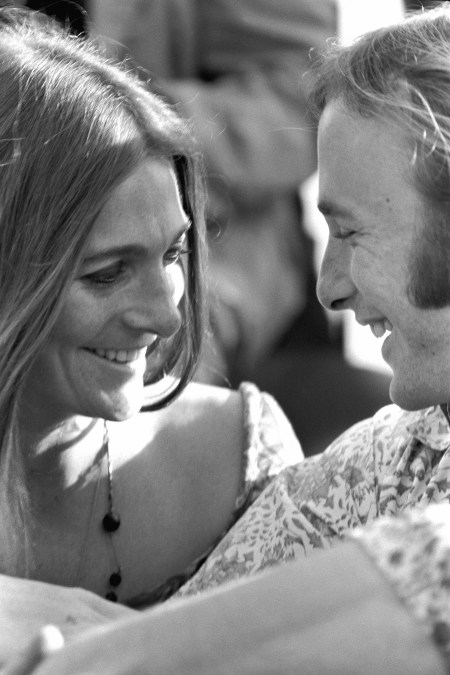Stephen Stills is about as close to a musical genius as they come.
A co-founding member of Buffalo Springfield—which also featured Neil Young on dual–lead guitar and vocals—Stills penned the band’s lone hit single and one of the era’s most enduring protest anthems, “For What It’s Worth.” Although the song had been written about a protest local to Los Angeles, it came to have a much greater meaning—one that echoed the cries of Vietnam War and Civil Rights protestors alike.

After Springfield’s breakup in ’68, Stills went on to form his best-known band, Crosby, Stills, & Nash (later adding Springfield co-founder Young to the mix). Releasing their eponymous debut in May 1969, it gained almost immediate notoriety after the trio, with Young sitting in on a few songs, made an appearance three months later at the Woodstock Festival. The album would go on to be certified four-times platinum.
The album’s opener, “Suite: Judy Blue Eyes,” is a bordering-on-classical composition Stills wrote about his romantic relationship with fellow musician Judy Collins. The couple first met in ’67, when Stills was still in Buffalo Springfield and Collins had just scored her first top 10 single with the Joni Mitchell–penned “Both Sides, Now,” which appeared on her album Wildflowers. In November 1968, singer-songwriter Collins released Who Knows Where the Time Goes, which featured guitar and bass cameos by her boyfriend Stills.
As Stills told the Independent in 2013, his relationship with Collins wasn’t your average fly-by-night, “free love”–era fling: “You know, we were together at an age when romance was really romance. Back then when you fell you fell hard and you’d wear your heart on your sleeve and you write all these songs.”
Immediately after guesting on Collins’ record, Stills entered the recording studio in New York in April 1968 with Collins at his side, and recorded a number of demos that would end up finding homes on future records—including “Suite: Judy Blue Eyes” and another simply titled, “Judy.” As Rolling Stone notes, the lyrics to the former were pieced together by Stills from different notebooks he’d jotted in, hence the “Suite” double entendre in the song title. Listening to the demo of “Suite”—the first 20 seconds of the recording are devoted to Stills detuning his guitar—pretty much everything that appears on the ’69 CSN debut is there.
In 1990, Collins remembered first hearing Stills play her the song either in a hotel room or apartment, and crying when she heard it. It’s the type of song that arouses a range of emotions, as its lyrics snake through the different phases of a breakup: the apology (“It’s getting to the point/where I’m no fun anymore/I am sorry”); the loneliness (“Tearing yourself away from me now you are free/And I am crying”), and the begging for forgiveness (“Will you come see me/Thursdays and Saturdays?/What have you got to lose?”). The relationship must’ve already started flaming out in ’68, when he demoed the song. This was almost exactly a year later.
As for the “Judy” demo, it’s a more refreshing complement to the it’s-complicated “Suite,” a simple love song written by a man who was still madly in love.
While it’s next to impossible to know when the actual breakup occurred, what we do know is that soon after CSN’s debut album hit and the band exploded, Stills and Collins were no more.
Between then and now, Stills would record a string of highly regarded and successful albums, including a trio of gold-selling solo albums (see: “Love the One You’re With” from his first, Stephen Stills, which goes down as the lone record to ever feature both Eric Clapton and Jimi Hendrix in supporting roles) and five platinum-selling records as part of Crosby, Stills, & Nash (four of which featured Young). Stills also founded three notable supergroups, Manassas (with Byrds co-founder Chris Hillman), the short-lived Stills-Young Band, which gifted the world with Long May You Run, and Bloomfield, Kooper & Stills, featuring Bob Dylan band alums Mike Bloomfield (guitar) and Al Kooper (keyboards), with whom he recorded the album Super Session.
Collins would go on to have a successful career as well, scoring two platinum-selling albums in 1972’s compilation record Colors of the Day, and 1975’s Judith, which featured her hit recording of Stephen Sondheim’s “Send in the Clowns.” The song would hit No. 19 on the Billboard charts, and be nominated for a Grammy Award. Collins would also score a quartet of gold records—In My Life (1966), Wildflowers (1967), Who Knows Where the Time Goes (1968), and Whales & Nightingales (1970).
Although Stills and Collins were only romantically involved for a few short years, the two shared a connection that transcended simple love-making. Collins would publish a memoir in 2011, tipping her cap to the relationship and song in its title, Sweet Judy Blue Eyes: My Life in Music. As Collins noted in 2013, she wrote a reply to “Suite: Judy Blue Eyes” on Judith, entitled “Houses.” And the two would end up sharing the stage together on and off again, but never anything altogether formal.

That all ended on July 26, 2017, when Stills and Collins hit the road together for the first time ever, for a 40-plus-date tour supporting a new album, Everybody Knows, which they recorded together. (One can’t help but wonder whether the album title is a hat-tip to Stills’ and Collins’ old pal, Neil Young, whose second solo record was entitled Everybody Knows This Is Nowhere.) Out on Sept. 22, the album features 10 songs, including new versions of the aforementioned Stills song “Questions,” Collins’ “Houses,” and the title track from Collins’ ’68 album, “Who Knows Where the Time Goes,” originally written and recorded by English folkie Sandy Denny. (The two have even dusted off Buffalo Springfield classics “For What It’s Worth” and “Bluebird” during their live show.)
Also making the cut? The first-ever completed version of “Judy,” the song Stills demoed in Collins’ presence all the way back in ’68.
Noticeably absent from the track-listing, though, is “Suite: Judy Blue Eyes.” But it makes sense: Like “For What It’s Worth,” it’s a song that’s eclipsed its original meaning or inspiration, and is almost un-cover-able. It doesn’t belong on a album recorded by old lovers, 50 years after the fact; it belongs in a museum.

This article was featured in the InsideHook newsletter. Sign up now.






















